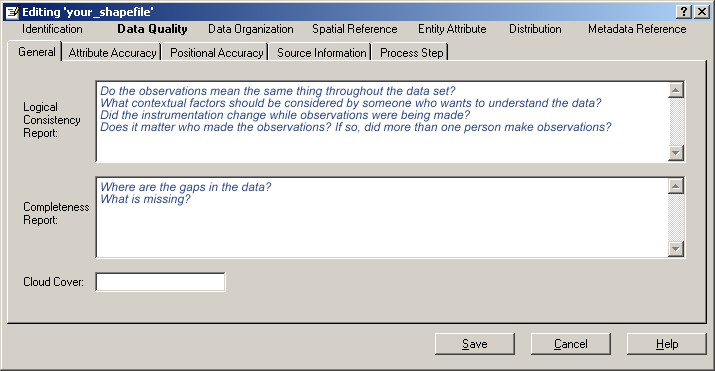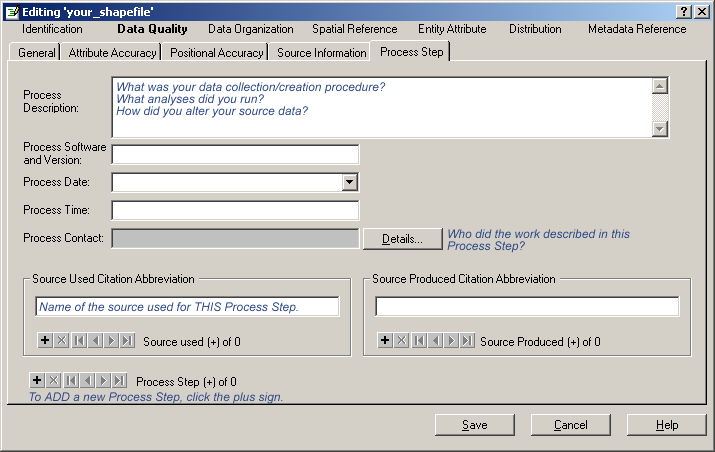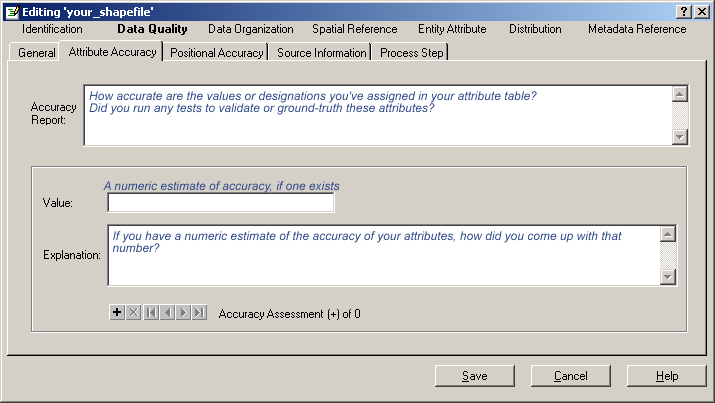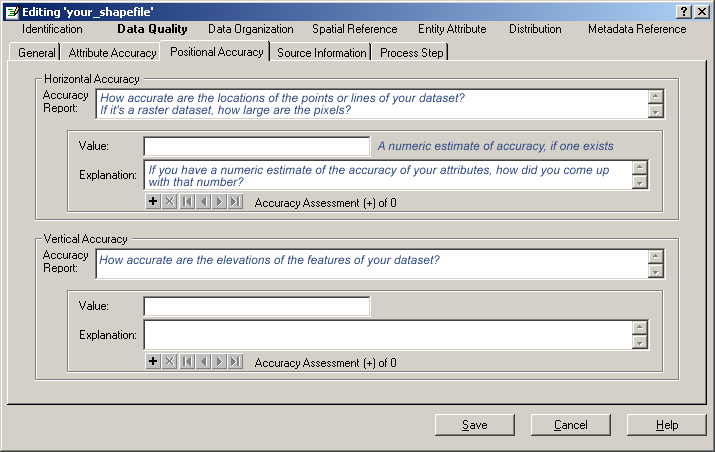

| Data Quality Information: | |
Now that you have a basic idea of how to edit a metadata document, we'll skip ahead to the Data Quality section. The Data Quality section contains information about the accuracy of your data, the sources used to create your data, and the process used to create your data. For some suggestions on information to enter in these fields, see the blue text below. Keep in mind that the purpose of metadata is to make the dataset more useful to anyone who wants to use it. So include the kind of information and the level of detail that would give someone a clear understanding of how your data were created. |
|
 |
|
The Process Step tab is the place to describe how your data were created. You can enter as many Process Steps as you like by clicking the button indicated below. If you used other data during the creation of your dataset, the other dataset(s) should be cited in the Source Information tab. Put a title or abbreviation (i.e. Tax Map or NLCD) in the Source Used Citation Abbreviation field. Continue to the Source Information section to see how to cite source data. | |
 |
|
The Source Information tab contains citation information for the data sources you used in your Process Steps. In the Source Citation Abbreviation field, enter the same title or abbreviation you used in the Process Step. Use the Source Citation and Source Time Period of Content tabs to enter full citation information for each data source. | |
 |
|
The Attribute Accuracy tab allows you to describe how accurately you assigned attributes to the features in your dataset. Is there any reason some features may be inaccurately described in the attribute table? How much ground-truthing did you do? | |
 |
|
The Positional Accuracy tab allows you to describe the accuracy of the acutal locations of the features in your dataset. Perhaps you know the features are within +/- 1m or your raster has 30m pixel size. This information would go in this section. | |
 |
|
| (Some of the information on this page was taken from Peter Schweitzer's "Metadata in Plain Language" website) | |
| Main |
| Instruction |
| Standards |
| Examples |
| FAQ |
| Data Management |
| Tools |
| FTSC Home |